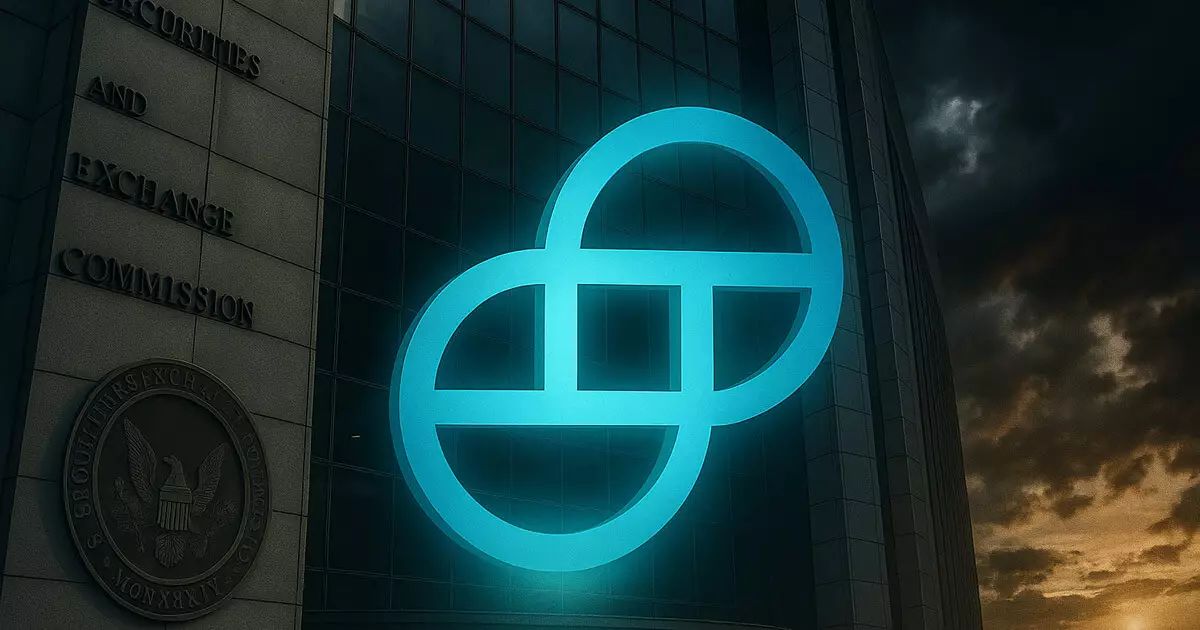Gemini’s decision to pursue a Nasdaq IPO amidst staggering losses represents a quintessential gamble cloaked in optimism. Reporting a net loss of over $282 million in the first half of 2025, the exchange’s financial health appears deeply compromised. Such a significant widening of losses—from $41.4 million in the same period in 2024—raises serious questions about the company’s profitability trajectory. Relying on revenue figures that have declined from $74.3 million to $67.9 million only underscores that, despite aspirations, Gemini remains far from financial stability. Going public under these circumstances echoes the dangerous myth that size and visibility can mask underlying inefficiencies and financial fragility.
Furthermore, the hyper-focus on future institutional adoption and investor demand as catalysts for success is naïve. The broader crypto ecosystem’s volatile history suggests that hype-driven IPOs often falter once initial enthusiasm fades. Gemini’s strategy to leverage anticipated institutional interest risks becoming a spectacular miscalculation if macroeconomic conditions—shaped by recent political shifts—fail to meet expectations. The firm’s reliance on a seemingly optimistic narrative of “growth” while burning significant cash undermines its credibility. Even the inclusion of a $75 million credit agreement with Ripple highlights the precarious nature of Gemini’s financial position—favoring short-term liquidity over long-term adaptability.
Politicized Timing and a Roaring Yet Risky Market
The timing of Gemini’s move cannot be detached from the broader political landscape, notably the return of Donald Trump to the White House. Advocates like Matthew Hougan see a “warmer political environment” as enabling cryptocurrencies to flourish in public markets. But this perspective is fundamentally myopic. Political climates change rapidly, and a “friendly” Trump administration remains an uncertain environment for crypto firms that rely heavily on regulatory clarity and investor confidence. The narrative that a pro-crypto stance automatically translates into market success is overly simplistic and ignores ongoing regulatory risks, potential policy reversals, and growing skepticism within parts of the political establishment.
Additionally, the hype surrounding the so-called “Year of the Crypto IPO” is largely fueled by market enthusiasm rather than tangible fundamentals. The successful listings of Circle and Bullish earlier this year, while impressive, do not necessarily create a sustainable momentum. Instead, they could set an unsustainable precedent—encouraging other firms to rush into the public markets motivated by fear of missing out rather than sound business models. Historically, markets that prioritize hype over fundamentals often end in spectacular collapses, and cryptocurrencies have no shortage of past failures to warn about.
Strategic Risks Behind Structuring and Regulatory Challenges
Gemini’s dual-entity operational structure, segregating its New York trust operations from the Florida-based Moonbase platform, underscores a strategic attempt to sidestep restrictive regulations. While this may buy some flexibility, it also introduces complexity and a potential regulatory gray area. The proprietary separation raises questions about transparency, investor understanding, and long-term regulatory compliance, especially given the stringent New York BitLicense constraints. Relying heavily on legal loopholes and strategic nesting exposes Gemini to unforeseen risks—regulatory crackdowns, legal exposures, or policy tightening could rapidly undermine its business model.
Furthermore, the firm’s emphasis on credit agreements with Ripple and its pledge to use Ripple’s stablecoins, like RLUSD, as part of the lending structure, signals a shift towards integrating traditional financial instruments with crypto assets. Yet, such moves are fraught with peril, as regulatory agencies worldwide scrutinize stablecoins and crypto lending practices. The risk of sudden regulatory interventions could turn Gemini’s innovative strategies into costly liabilities. Falling into regulatory traps or facing restrictions on lending activities could wipe out the firm’s strategic advantage and investor confidence.
Market Validation or Hollow Hype?
While the crypto industry’s enthusiasm for IPOs appears justified on the surface—seemingly validated by high-profile listings—this narrative conceals deeper instability. The recent surge of crypto companies into public markets is driven not only by genuine growth but also by a speculative frenzy. As Bitcoin remains volatile and many crypto projects struggle to demonstrate real earnings, the valuation of exchanges like Gemini rests precariously on investor sentiment rather than fundamental strength.
The assertion that 2025 is “the year of the crypto IPO” might turn out to be a mirage. History suggests that the initial euphoria wanes quickly when the underlying assets falter or regulatory hurdles intensify. As firms like Gemini enter the public arena with considerable losses, they may find that market patience is limited. The risks associated with over-leverage, operational vulnerabilities, and regulatory clampdowns threaten to expose the fragility behind the crypto industry’s glittering facade.
Gemini’s IPO pursuit embodies a risky confluence of overconfidence, regulatory vulnerability, and market hype. While ambition is admirable, it should not obscure the fundamental issues plaguing the company. Without genuine profitability or a clear pathway to sustainable growth, Gemini’s bold move appears more like a high-stakes gamble—one that could unravel if the market’s optimism falters or regulatory headwinds intensify.



















Leave a Reply